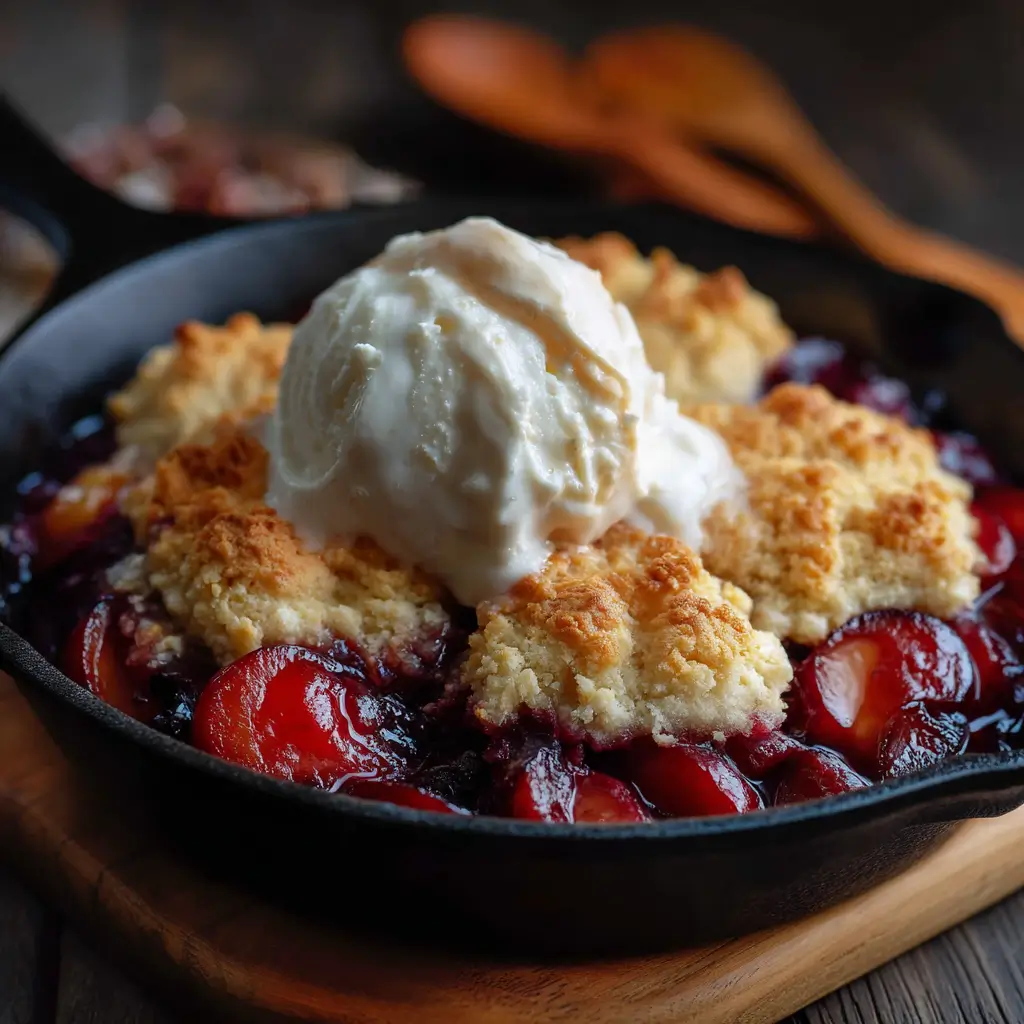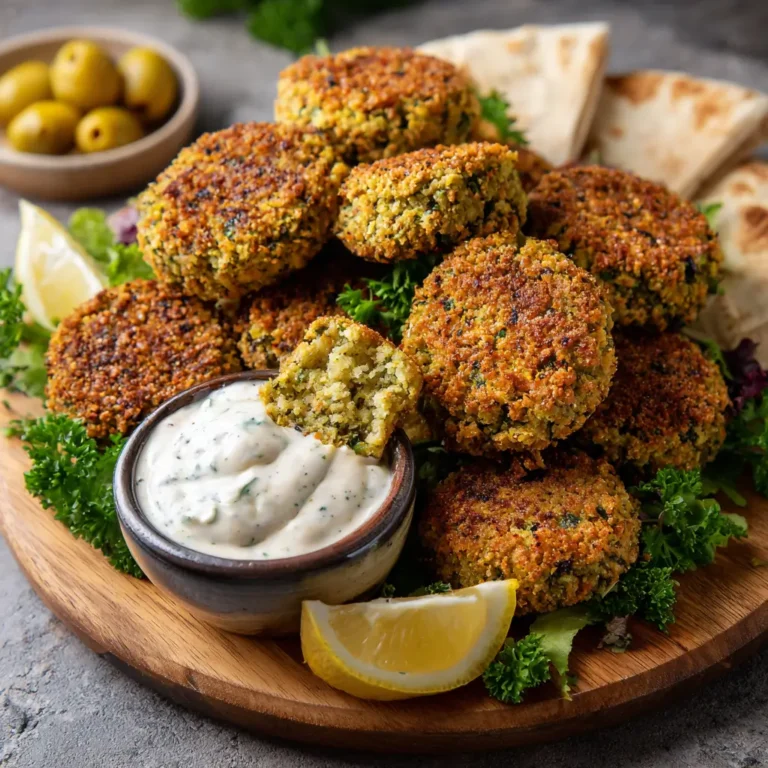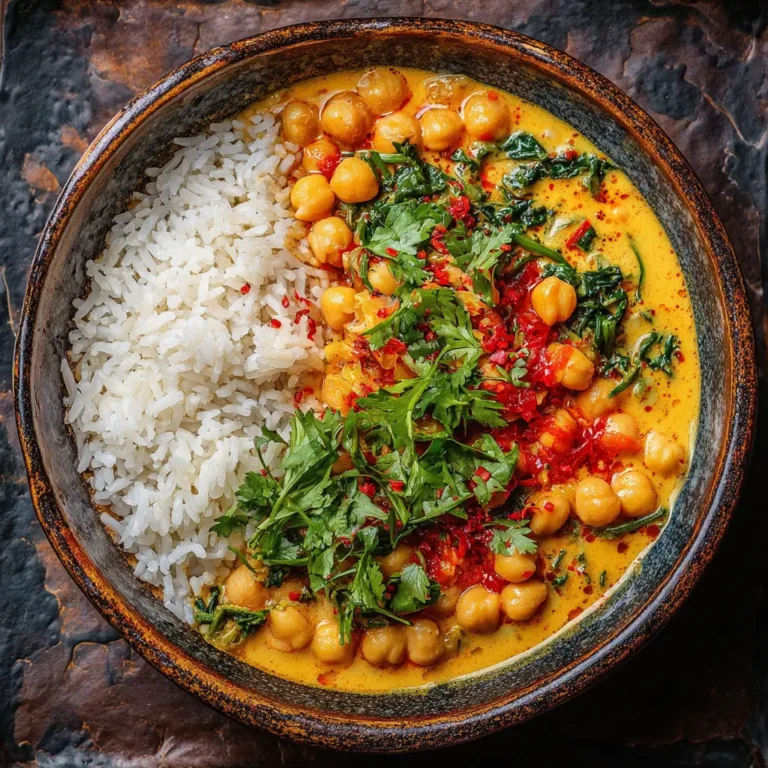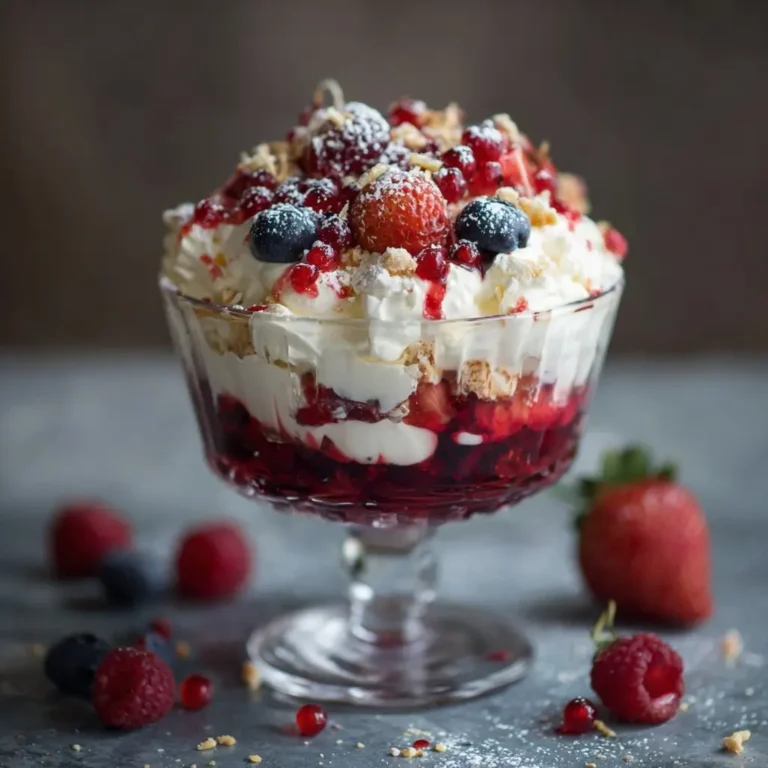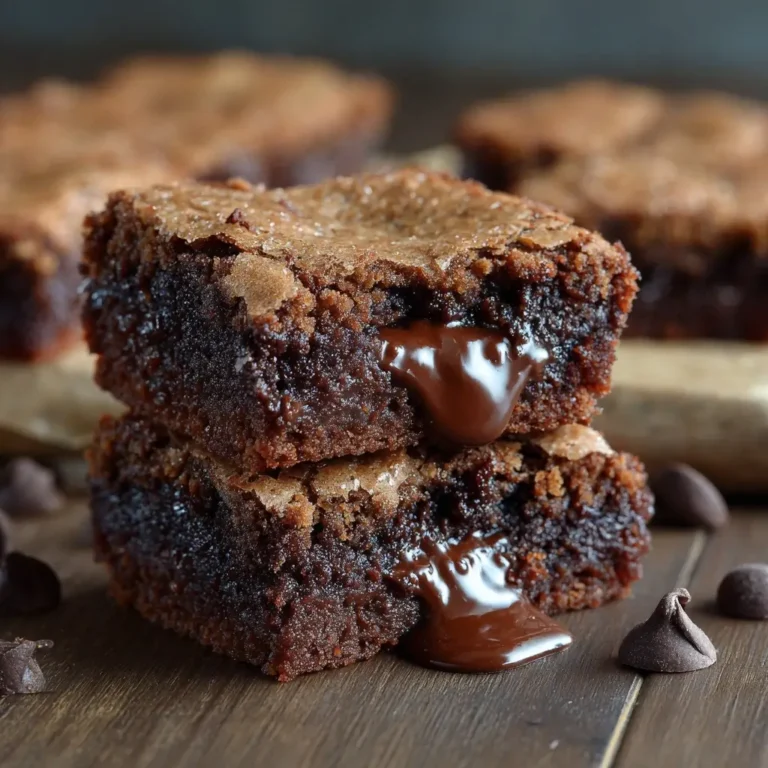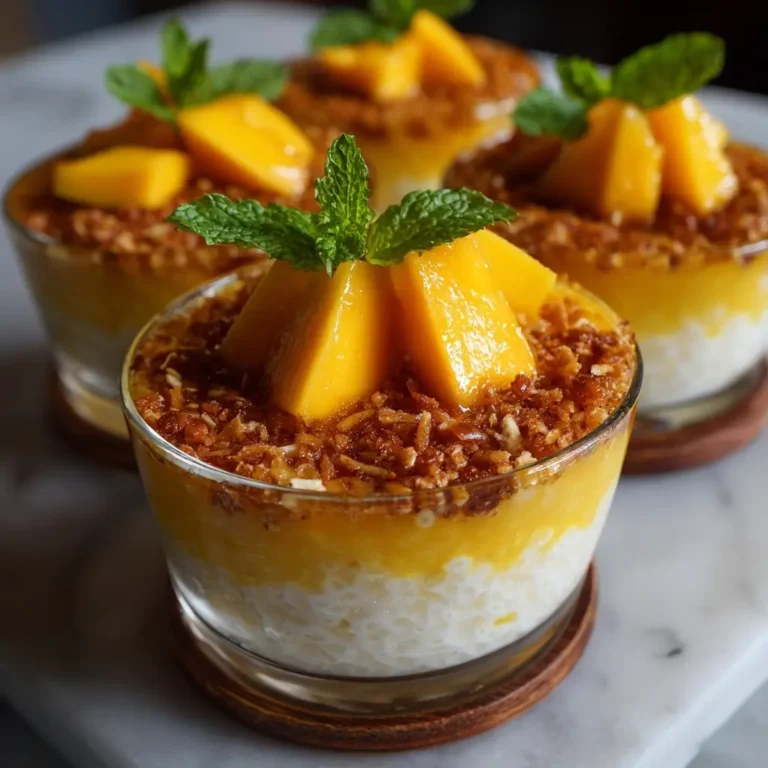Honey‑Rose Plum Cobbler
Honey-Rose Plum Cobbler: A Symphony of Sweet and Floral Flavors
There’s something undeniably comforting about a warm, bubbling cobbler fresh from the oven. The Honey-Rose Plum Cobbler is more than just a dessert—it’s an experience that combines the tartness of ripe plums with the floral elegance of rose water and the natural sweetness of honey. This exquisite fusion of flavors creates a dessert that feels both nostalgic and luxuriously modern. Whether served at a summer garden party or as a cozy winter treat, this cobbler brings warmth, fragrance, and joy to every spoonful.
The History of Cobblers and the Evolution of Flavor Pairings
Cobblers have long been a staple in American home baking, dating back to the colonial era when settlers lacked proper pie tins and instead baked fruit fillings with dropped biscuit dough on top—resembling rough cobblestones, hence the name “cobbler.” Over time, the dessert evolved regionally, incorporating local fruits and sweeteners. While traditional cobblers featured apples, peaches, and berries, modern interpretations now embrace global flavor profiles.
The addition of rose water and honey in a plum cobbler draws inspiration from Middle Eastern and Mediterranean culinary traditions, where rose petals and floral waters are commonly used in desserts like baklava, Turkish delight, and Persian halva. Plums themselves have ancient roots in Asia and the Caucasus, later spreading across Europe and the Americas. By combining these elements—plums kissed by summer sun, fragrant rose water, and golden honey—we bridge continents and centuries, creating a dessert that honors tradition while embracing innovation.
Ingredients Breakdown: Why Each Component Matters
Fresh Plums: The star of this dish, plums offer a perfect balance of tartness and sweetness. Their high pectin content helps thicken the filling naturally, while their deep purple hue adds visual drama. Choose slightly firm plums for baking—they hold their shape better than overripe ones.
Honey: Not just a sweetener, honey contributes depth and complexity. Its floral notes harmonize beautifully with rose water, enhancing the overall aromatic profile. Opt for raw, unfiltered honey for maximum flavor and health benefits.
Rose Water: A few drops go a long way. Rose water imparts a delicate perfume that elevates the cobbler without overpowering it. Authentic rose water should be pure, preferably made from damask roses (Rosa damascena), and free from artificial additives.
Lemon Juice and Zest: These brighten the filling, cutting through the richness and balancing the sweetness. Lemon also prevents the plums from browning too quickly during baking.
Cinnamon and Cardamom: Warm spices that complement both plums and floral notes. Cinnamon adds a familiar warmth, while cardamom introduces a subtle citrusy, herbal complexity often found in Persian desserts.
All-Purpose Flour: Used in both the fruit filling and the biscuit topping, flour provides structure. For a gluten-free version, almond flour or oat flour can be substituted carefully.
Baking Powder and Baking Soda: Leavening agents that ensure the cobbler topping rises evenly and turns golden and tender.
Butter (or Vegan Butter): Cold butter is key to achieving flaky, melt-in-your-mouth biscuits. It creates steam pockets during baking, resulting in a light, airy texture.
Heavy Cream (or Coconut Milk): Adds richness to the dough. Using full-fat coconut milk makes this dessert dairy-free while contributing a subtle tropical undertone.
Vanilla Extract: Enhances sweetness and rounds out the flavor profile, especially when paired with honey and rose.
Sea Salt: A pinch enhances all other flavors, preventing the dessert from tasting flat or overly sweet.
Turbinado Sugar (Optional Garnish): Sprinkled on top before baking, it gives the cobbler a delightful crunch and caramelized sparkle.
Step-by-Step Recipe: Crafting the Perfect Honey-Rose Plum Cobbler
Ingredients
Filling:
- 6 medium ripe plums (about 2 lbs / 900g), pitted and sliced into wedges
- 1/3 cup raw honey (plus extra for drizzling)
- 1 tablespoon fresh lemon juice
- 1 teaspoon lemon zest
- 1 teaspoon food-grade rose water
- 2 tablespoons all-purpose flour (or cornstarch for thickening)
- 1/2 teaspoon ground cinnamon
- 1/4 teaspoon ground cardamom
- A pinch of sea salt
Biscuit Topping:
- 1 1/2 cups all-purpose flour (or gluten-free blend)
- 1/4 cup granulated sugar (or coconut sugar)
- 1 tablespoon baking powder
- 1/2 teaspoon baking soda
- 1/2 teaspoon sea salt
- 6 tablespoons cold unsalted butter, cubed (or vegan butter)
- 1/2 cup heavy cream (or full-fat coconut milk)
- 1 large egg (or flax egg: 1 tbsp ground flaxseed + 3 tbsp water)
- 1 teaspoon vanilla extract
- 1 tablespoon turbinado sugar (for sprinkling)
Directions
- Preheat the Oven: Begin by preheating your oven to 375°F (190°C). Lightly grease a 9-inch cast-iron skillet or ceramic baking dish with butter or oil.
- Prepare the Filling: In a large mixing bowl, combine the sliced plums, honey, lemon juice, lemon zest, rose water, flour (or cornstarch), cinnamon, cardamom, and salt. Gently toss until the plums are evenly coated. Taste a small piece—if it’s too tart, add another drizzle of honey. Transfer the mixture to the prepared baking dish, spreading it out evenly.
- Make the Biscuit Dough: In a separate bowl, whisk together the flour, sugar, baking powder, baking soda, and salt. Add the cold cubed butter and use a pastry cutter or fork to cut it into the dry ingredients until the mixture resembles coarse crumbs with pea-sized butter pieces.
- Add Wet Ingredients: In a small bowl, whisk together the cream, egg (or flax egg), and vanilla extract. Pour this into the flour-butter mixture and stir gently with a spatula until just combined. Do not overmix—this ensures a tender, fluffy topping.
- Assemble the Cobbler: Drop spoonfuls of the biscuit dough over the plum filling. Don’t worry about covering every inch—the gaps allow steam to escape and create a rustic, homemade look. Use the back of the spoon to gently spread each dollop.
- Sprinkle and Bake: Lightly sprinkle turbinado sugar over the top for a crunchy, golden crust. Place the dish in the center of the preheated oven and bake for 40–45 minutes, or until the topping is risen, golden brown, and a toothpick inserted into the center comes out clean.
- Cool Slightly: Remove from the oven and let rest for 15–20 minutes. This allows the filling to set slightly, making serving easier.
- Serve Warm: Scoop into bowls and serve as-is or with a generous scoop of vanilla ice cream, whipped cream, or Greek yogurt. Drizzle with extra honey and a light mist of rose water for an elegant finish.
Tips for Success
- Don’t Overmix the Dough: Overworking the biscuit topping will result in tough, dense biscuits. Mix only until the ingredients are incorporated.
- Use Cold Ingredients: Cold butter and cold cream help create steam during baking, which lifts the dough and creates layers.
- Adjust Sweetness Based on Plum Ripeness: If your plums are very tart, increase honey by 1–2 tablespoons. If they’re already sweet, you may reduce it slightly.
- Watch the Rose Water: Too much rose water can make the dessert taste soapy. Stick to 1 teaspoon unless you’re using a mild brand; then, you can go up to 1 1/2 teaspoons.
- Bake Until Bubbling: The filling should bubble around the edges, indicating that the juices have thickened properly.
- Let It Rest: Allowing the cobbler to cool slightly improves texture and prevents scalding hot fruit from bursting out when scooped.
- Use Cast Iron for Best Results: A cast-iron skillet distributes heat evenly and retains it well, helping achieve a crisp bottom crust and even cooking.
Variations and Customizations
Seasonal Fruit Swaps: While plums shine here, you can substitute or mix in apricots, peaches, nectarines, or cherries. Adjust honey based on tartness.
Floral Twists: Replace rose water with orange blossom water for a citrus-floral note, or add a few edible dried rose petals to the filling for visual appeal.
Spice Variations: Try adding a pinch of nutmeg, ginger, or star anise for deeper warmth. For a Middle Eastern flair, include a touch of saffron steeped in warm milk.
Dietary Adaptations:
- Gluten-Free: Use a 1:1 gluten-free flour blend for both filling and topping.
- Dairy-Free: Substitute butter with vegan butter or coconut oil, and use coconut milk or almond milk instead of heavy cream.
- Vegan: Combine dairy-free substitutions with a flax egg. Ensure your sugar is vegan-certified.
- Low-Sugar: Reduce honey and use monk fruit sweetener or stevia in the biscuit topping.
Texture Twists: For a crumble-style top, mix the biscuit ingredients with your fingers until crumbly and sprinkle over the fruit. Or, swap the biscuit topping for a classic pie crust for a hybrid cobbler-pie.
Mini Individual Cobblers: Divide the filling and topping among ramekins and bake for 25–30 minutes for charming single servings.
Health Considerations and Nutritional Value
While desserts should be enjoyed in moderation, this Honey-Rose Plum Cobbler offers several nutritional advantages over conventional sugary treats.
Plums: Rich in antioxidants like anthocyanins and chlorogenic acid, plums support heart health, digestion (thanks to their fiber content), and may help regulate blood sugar due to their low glycemic index.
Honey: Contains trace enzymes, vitamins, and minerals. Raw honey has antimicrobial properties and may soothe sore throats. However, it still counts as added sugar—moderation is key.
Rose Water: Traditionally used in aromatherapy and herbal medicine, rose water may have calming effects and aid digestion when consumed in small amounts.
Whole Ingredients: By avoiding refined white sugar and processed shortenings, this recipe leans toward whole-food preparation. Using whole wheat pastry flour or oats can further boost fiber.
Nutrition Estimate (per serving, serves 6):
- Calories: ~320 kcal
- Total Fat: 14g (mostly from butter and cream)
- Saturated Fat: 8g
- Carbohydrates: 46g
- Fiber: 3g
- Sugars: 28g (naturally occurring from fruit and honey)
- Protein: 5g
- Vitamin C: 10% DV
- Calcium: 8% DV
- Iron: 6% DV
Note: Values vary based on ingredient brands and substitutions. For lower-calorie versions, reduce butter and honey slightly and increase plum quantity.
Frequently Asked Questions (FAQ)
Can I make this cobbler ahead of time?
Yes! Assemble the cobbler (without baking) up to 24 hours in advance and refrigerate. Let it sit at room temperature for 20 minutes before baking. You can also fully bake and reheat in a 325°F oven for 15–20 minutes.
Can I freeze Honey-Rose Plum Cobbler?
Absolutely. Cool completely, wrap tightly, and freeze for up to 3 months. Thaw in the refrigerator overnight and reheat in the oven. Note: Texture may soften slightly.
Why did my biscuit topping turn out dense?
Likely causes: overmixing the dough, using melted butter instead of cold, or expired leavening agents. Always use fresh baking powder and cold fats.
Is rose water safe to consume?
Yes, if it’s labeled as food-grade and intended for culinary use. Avoid cosmetic-grade rose water, which may contain alcohol or preservatives not meant for ingestion.
Can I use frozen plums?
Yes, but thaw and drain excess liquid first to prevent a soggy cobbler. You may need to increase thickener (flour or cornstarch) slightly.
What can I serve with this cobbler?
Classic pairings include vanilla ice cream, mascarpone, whipped cream, or coconut yogurt. A drizzle of honey and crushed pistachios add luxury.
Can I double the recipe?
Yes, use a larger baking dish (like a 9×13 inch) and increase baking time by 10–15 minutes. Monitor closely to avoid burning.
How do I store leftovers?
Cover and refrigerate for up to 4 days. Reheat in the oven or microwave. The filling may continue to thicken upon cooling.
Summary
The Honey-Rose Plum Cobbler is a luxurious yet humble dessert that marries the tangy richness of summer plums with the golden sweetness of honey and the enchanting aroma of rose water. With its flaky biscuit crown and jewel-toned filling, it’s a celebration of seasonal produce and global flavors in one irresistible dish.
